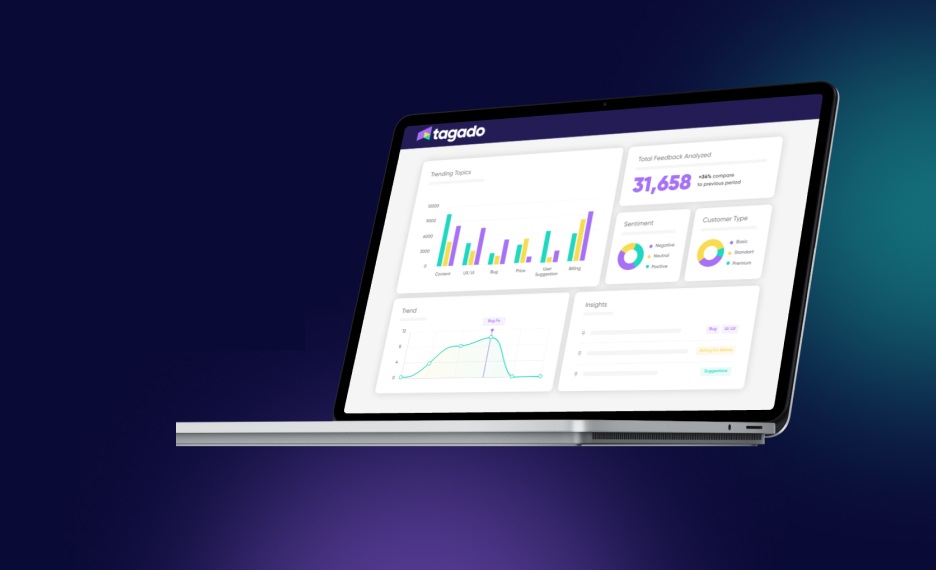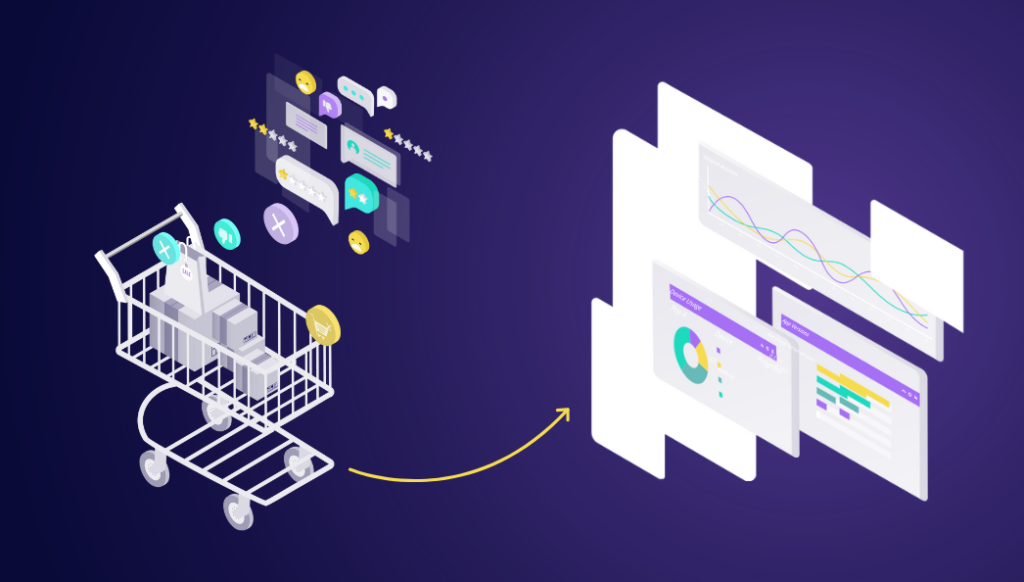While customer feedback is a valuable source of information for businesses looking to improve their products and services, analyzing the vast amounts of feedback available can be an overwhelming task.
ML algorithms can analyze customer reviews, social media comments, emails, customer support transcripts and tickets, and other sources of customer feedback to deliver a wide range of insights. The result is the transformation of unstructured, mountainous volumes of feedback, spread across multiple channels, into usable information from which organizations can make strategic decisions.
Unlocking Insights: How Machine Learning Elevates Data Analysis
Machine Learning algorithms can provide multiple types of data analysis:
- Sentiment Analysis: Understanding customer sentiment towards a specific product or service. For example, are customer sentiments generally positive, negative, or neutral? This could, for instance, help your organization react to unfavorable reviews quickly, potentially saving your brand image and increasing customer retention, eventually enhancing your ROI.
- Customer Segmentation: Extracting patterns and segmenting customers into different groups for personalized marketing. For example, customers’ tastes often vary, and using ML, we can identify these various groups to offer them the best-suited products or services, leading to increased sales and accordingly better return on investment.
- Predictive Analytics: Predictively analyzing customer behavior and patterns to identify future opportunities and threats. For instance, identifying customers who are likely to churn, and subsequently offering them targeted benefits to keep them engaged. Similarly, ML can also predict which prospective customers are likely to convert, so you can focus more resources on them.
- Automated Customer Service: ML algorithms can analyze past customer queries and responses to allocate resources or provide automated answers to common questions. This helps in reducing the customer service cost and increasing customer satisfaction.
- Trend Discovery: With time, trends change, and ML is excellent at spotting such evolving trends. For example, it might identify rising demand for a specific product feature, enabling you to optimize resource allocation.
- Product Recommendations: Based on past purchasing behavior and browsing history, ML can provide personalized product recommendations, which increases conversion rates and average order value.
- Quality Control: ML can analyze customer feedback to identify product or service quality issues. This enables quick corrective actions thereby reducing returns or refunds.
These insights not only help you gain a competitive advantage but also enhance customer experience, increase customer retention, and reduce operation costs, all eventually leading to an increase in ROI. However, remember, the degree of impact on ROI would largely depend on how effectively you execute the strategies derived from these insights.
Fueling Actionable Insights: The Innovations Behind Customer Feedback Analysis
Both Natural Language Processing (NLP) and Machine Learning (ML) are critical in transforming customer feedback into actionable insights. Here are some advances in these fields that make those tasks possible:
- Deep Learning: Deep Learning is a subset of Machine Learning, formulated around Neural Networks with massive amounts of data. Today, Deep Learning models can achieve incredible accuracy levels by learning from the data.
- Sequential Models: Sequential models like Recurrent Neural Networks (RNN) and Long Short Term Memory (LSTM) networks are advanced forms of deep learning models. They are capable of handling serialized data effectively.
- Transformer-based Models: Transformer-based models like BERT, GPT, and T5 have revolutionized the NLP field. They can understand the context of words and sentences, making sentiment analysis and intent recognition much more accurate.
- Supervised and Unsupervised Learning: In supervised learning, ML models are trained with labeled data, where the ‘correct answers’ are known. In contrast, unsupervised learning algorithms are used on data where the ‘correct answers’ are not known. These can be used to identify patterns or anomalies that might be less obvious, like identifying new customer segments.
- Transfer Learning: This is a technique where pre-trained models are used as starting points or on related tasks. For example, NLP models trained on large quantities of text data can be fine-tuned and used for sentiment analysis or categorizing customer feedback.
- Word Embeddings & Vector Space Models: These are used to represent words or documents in a numerical, machine-readable way. Algorithms can process these vectors to understand text semantics and relations between words, which helps in the interpretation of customer feedback.
- Progress in Conversational AI: Advancements in ML and NLP have led to the development of more sophisticated chatbots and virtual assistants. They can offer real-time support to the customer and improve their experience with personalized interactions.
- Explainable AI: As algorithms become more complex, there is a growing demand for interpretability and transparency. Explainable AI techniques are being developed to help understand and explain ML decisions.
These advancements help unlock value from massive amounts of unstructured customer feedback data, turning it into understandable and actionable insights.
Revolutionizing CX: Tagado’s AI-Powered Customer Feedback Analysis Platform
Tagado is at the forefront of the intersection between customer service and technology, with a SaaS solution that beautifully integrates both classical machine learning and cutting-edge, generative AI models. The system is capable of ingesting and analyzing endless amounts of customer feedback in real-time, whether it be from social media interactions, customer service transcripts, reviews, or any other medium. By sifting through this ocean of data, Tagado’s solution can identify recurring issues, discern customer sentiment, cluster feedback into thematic categories, and predict trends. This valuable information is then transformed into actionable insights focused on driving monetary results and ROI.
But the innovation by Tagado does not stop there. A major differentiator with their solution is the strong emphasis on delivery. Rather than just provide raw data, the insights they generate are positioned for optimal application — giving businesses concrete strategies and steps to leverage the rich information obtained from customer feedback.
Understanding that machine learning models are only as good as the data they are trained on, Tagado has ingeniously developed a solution that accelerates the data labeling process. This not only ensures the upkeep of the solution’s high accuracy in generating insights but also enables the continuous adaptation and improvement of the models as new feedback comes in. It’s an example of a learning system that not just informs regarding the past and present, but one that preemptively adapts to future scenarios.
Through the use of a cutting-edge technology-anchored solution, Tagado is revolutionizing the way businesses transform customer feedback into actionable insights, safeguarding a tangible return on investment.
Discover why Tagado stands at the forefront of AI-driven customer feedback analytics platforms by booking a demo now.




